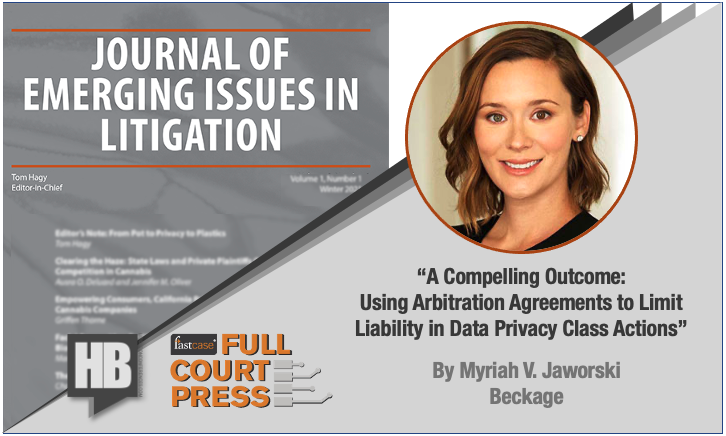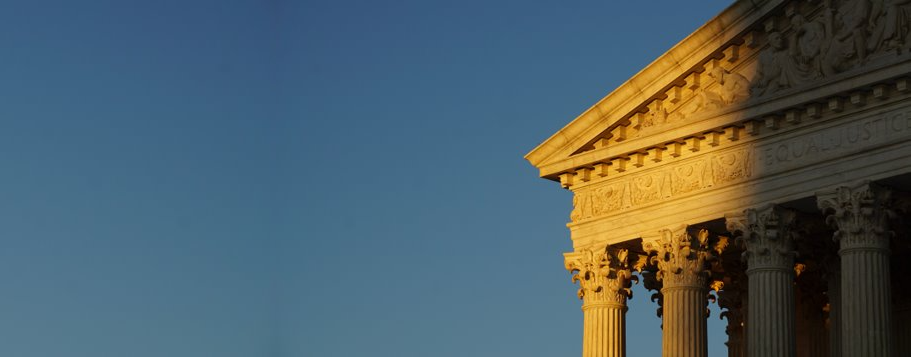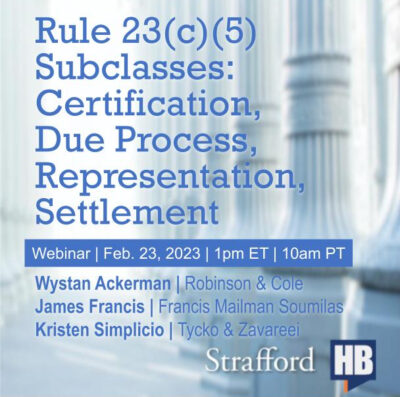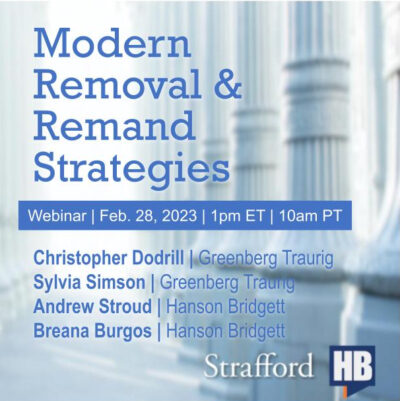Myriah Jaworski on Individual Arbitration as a Defense Strategy Against Data Breach Class Actions
Abstract
Data privacy class actions are proliferating. Defendant companies may find an effective defense strategy is moving to compel individual arbitration. Not all contracts have the appropriate language, however, and, even if they do, they may not succeed. This article, which will appear in the forthcoming issue of the Journal on Emerging Issues in Litigation, discusses U.S. privacy litigation and case law on compelling arbitration of class claims in the privacy law context, with recommendations for businesses to improve their chances of securing court orders that enforce arbitration language in their agreements.
Author
Myriah V. Jaworski, Esq. (mjaworski@beckage.com), is a member with the Beckage, a law firm specializing in technology, data security and privacy. She is a Certified Information Privacy Professional, United States (CIPP/US) and Certified Information Privacy Professional, Europe (CIPP/E). She leads Beckage’s Privacy Litigation Practice Group where she represents clients in data breach actions, technology vendor disputes, and the defense of consumer class actions and related regulatory investigations. Myriah is also a former Trial Attorney with the Department of Justice.
About
The Journal on Emerging Issues in Litigation is a co-production of HB, Fastcase, and Law Street Media. You can also hear the complementary (and complimentary) Emerging Litigation Podcast wherever podcasts appear. For questions, contact Tom Hagy, Editor in Chief, at Editor@LitigationConferences.com.
Class Certification Evidence: Standards of Admissibility and Probative Value Among the Circuits
Class Certification Evidence What Are the Standards of Admissibility and Probative Value Among the Circuits? Numerous splits exist among the circuits on two key certification issues: What is required to prove the elements for class certification and whether plaintiff's certification evidence must be admissible. Further, courts apply different admissibility standards to fact evidence than to expert evidence. Certain courts have issued clear guidance on these important issues, while others have remained circumspect, sending mixed signals. This is particularly vexing for defendants, who may be sued in more than one district or circuit. What is sufficient for class certification in one jurisdiction may be inadequate in another. With standards unsettled, counsel must anticipate and preserve the right to revisit class certification by preserving all objections and the factual record. Listen as the panel of class action attorneys discusses the standards of admissibility of evidence at certification and best strategies for leveraging ambiguities. Questions Addressed How can defense counsel preserve objections to admissibility? How can counsel leverage the law of other circuits in jurisdictions with no controlling precedent? What does how a court assesses evidence imply about its view on admissibility standards? Webinar Outline Fact evidence Need not be admissible Must be admissible Ambiguous Expert evidence Full Daubert analysis Limited Daubert analysis Strategies for managing and leveraging the uncertainty A Strafford production specially selected for HB audiences. Learn Strategies forOpposing or Narrowing Class Certificationand Preserving Objections This Strafford production has been specially selected for HB audiences. Kevin Daly Counsel Robinson & Cole Alexander Madrid Partner McGuire Woods Michael Ruttinger Partner Tucker Ellis Robert Sparkes, III Partner K&L Gates This Strafford production has been specially selected for HB audiences.
Discovery Strategies in Wage and Hour Class and Collective Actions Before and After Certification of Putative Class
Discovery Strategies in Wage and Hour Class and Collective Actions Before and After Certification of Putative Class Strategically Limiting Discovery, Resolving Discovery Disputes Wage and hour class and collective actions are complex and discovery intensive. Discovery requests are often burdensome, seeking information concerning a broad swath of workers. This causes the discovery process to sometimes linger for years and creates a significant expense for employers.In recent years, courts have emphasized that parties must rein in extensive and expensive discovery requests. Employment litigators are increasingly raising proportionality arguments as a basis for objecting to opposing counsel's discovery requests. Drafters are responding by tailoring requests to anticipate such challenges. Drafting discovery requests that are likely to withstand burden and proportionality challenges and objections to broad discovery requests is critical for litigators representing employers in wage and hour class and collective actions. Employment litigators must develop and implement effective discovery strategies both before and, as applicable, after certification of the putative class. These strategies often must anticipate the possibility of a future summary judgment motion, further certification practice, and trial on the merits. Listen as our authoritative panel of employment law attorneys explains effective strategies for pursuing or objecting to discovery requests in wage and hour collective and class actions and resolving discovery disputes that arise during litigation. Questions Addressed: What are the most common discovery challenges counsel face when litigating wage and hour collective and class actions--from initiation through resolution of the case? What strategies have been effective in wage and hour collective and class actions for obtaining essential information with the least expense? What is the scope of discoverable evidence before and after certification of the putative class, and how can you limit or best manage discovery? When drafting discovery requests in wage and hour class and collective actions, what should employment counsel consider to ensure that the requests align with the proportionality standard? Interested in More CLE OnDemand? Click Here. Interested in this program? Click here to send us a note. Interested in this program? Click here to send [...]
Lost Profits in Commercial Litigation: Proving and Defending Damages
Lost Profits in Commercial Litigation: Proving and Defending Damages Leveraging Calculation Methodologies, Documentation, Expert Evidence, and Effect of COVID Lost profits are often the single most substantial aspect of the plaintiff's claim as well as one of the most contentious, challenging types of damages to prove and are particularly susceptible to attack.In the duel of experts over lost profits damages, both sides will want to analyze and present complex financial documentation as clearly and concisely as possible. Plaintiff's experts must put forth damages studies that are credible and can withstand cross examination from the opposition.In determining how best to counter the plaintiff's damages claim, defense counsel faces a delicate balancing act between defending against liability and discrediting the plaintiff's numbers as presented through a defense expert.Listen as our panel discusses the framework, bases, and aspects of lost profit damages calculations and how to prove or defend against lost profit damages. Outline Framework for lost profits damages Evidence/documentation Quantification of lost profits damages Presentation of lost profits damages Defending against lost profits damages A Strafford production specially selected for HB audiences. Derrick Boyd Founding Partner Boyd Powers Williamson Cameron Byrd Attorney Ahmad Zavitsanos Anaipakos Alavi & Mensing Dr. Allyn Needham, Ph.D., CEA Partner Shipp Needham Economic Analysis The panel will review these and other crucial issues: What evidence and documentation are necessary to prove and defend lost profits damages claims? What methodologies can be used to establish lost profits damages? What are the critical consequences of the COVID pandemic on lost profits claims? What is the most recent case law about lost profits? Does it matter whether the damages alleged are general or special?
Daubert Motions in Construction Litigation: Standards for Expert Witnesses in Design and Defect Claims
Daubert Motions in Construction Litigation: Standards for Expert Witnesses in Design and Defect Claims Raising or Defending Daubert Challenges to Admitting Expert Testimony In most construction suits, both sides rely on experts to provide opinions and testimony supporting or against claims of liability and damages. Such expert testimony often involves determining fault for design and construction defects, schedule delays, and worker inefficiency. Expert opinion and testimony impact all parties in a construction dispute, including property owners, developers, financial institutions, design professionals, contractors, subcontractors, suppliers, and vendors.The Daubert/Frye ruling and the body of law on challenging expert opinions and testimony continue to evolve for construction disputes in both state and federal courts. Courts permit testing expert of testimony and an expert’s foundational methodology or technique to ensure that it is relevant and reliable.Listen as our panel of construction litigators discusses the applicability of the Daubert/Frye standards to the presentation of expert testimony in construction disputes, analyzes what is required to successfully raise or defend a challenge to the admission of expert testimony, and provides guidance for using experts in construction cases. Outline Dispositive motions in the Daubert hearing: the Daubert challenge Frye standards: how they differ from Daubert standards Application to construction cases Application to scheduling, construction defects, and damages Future impact of Daubert/Frye on construction claims Lessons from court rulings A Strafford production specially selected for HB audiences. David Adelstein Partner Kirwin Norris Patrick Perrone Partner K&L Gates The panel will review these and other key issues: How can counsel effectively challenge a construction expert witness' theories and whether those theories have been tested? Under what circumstances should counsel consider not filing a Daubert/Frye motion? How can counsel leverage prior rulings involving a construction expert witness?
Rule 23(c)(5) Subclasses: Certification, Due Process, Adequate Representation, and Settlement
Rule 23(c)(5) Subclasses: Certification, Due Process, Adequate Representation, and Settlement Plaintiffs can define and propose subclasses to address unique issues or to resolve potential intra-class conflicts of interest. Counsel opposing certification will want to emphasize the intra-class conflict as reason to deny certification and show how subclasses render class treatment unmanageable.Due process requires adequacy of representation for all class members, including subclasses. Circuit courts have overturned settlements if they see conflicts of interest among subclasses and the failure of class counsel to ensure independent representation of subclasses.Listen as this experienced panel of class action litigators guides both plaintiff and defense counsel through the effective use of subclasses to resolve the case. Outline Statutory basis of subclasses Types of cases and issues best suited for subclasses Resolving conflicts of interest among subclasses A Strafford production specially selected for HB audiences. Wystan Ackerman Partner Robinson & Cole James Francis Co-Founder Francis Mailman Soumilas Kristen Simplicio Partner Tycko & Zavareei The panel will review these and other key issues: What are the tell-tale signs that a subclass is needed or required? When can subclasses be created? Can there be subclasses within subclasses or is predominance destroyed? What are the due process concerns with subclasses and subclass representation? What should defense counsel consider when deciding whether to oppose certification of subclasses?
Modern Removal and Remand Strategies: Forum Defendant Rule; Snap Removal; Effect on Pleadings, Motion Practice
Modern Removal and Remand Strategies Forum Defendant Rule; Snap Removal; Effect on Pleadings, Motion Practice A defendant in a lawsuit filed in state court can "remove" the case to federal court if there is a diversity of citizenship, except if a "properly joined and served" defendant is a citizen of the forum state. With the advent of electronic filing, defendants now have instantaneous notice of suits and may remove the case before being served, thereby sidestepping the forum defendant rule. Although several U.S. Circuit Courts have approved the practice, a debate remains on whether this practice should be approved.Plaintiffs have their own toolbox to anticipate removal strategies and take preemptive actions to make removal difficult and remand likely. Since all parties can play the literal-reading-of-the-statute card, plaintiffs have seized on ways to bring the "real" parties into the dispute in such a way as to prevent removal.If the case comes to a stop in federal court after removal, the parties must be aware of how the change in forum impacts the rest of the case: deadlines, motions, pleadings, what must be answered, and what is stayed.Listen as this experienced panel of litigators discusses which removal and remand planning and strategies can make the most difference. Outline Statutory authority and procedural requirements Strategies for plaintiffs Avoiding federal question Avoiding diversity, pre- and post-filing Federal question issues as counterclaims; Home Depot v. Jackson Amending the complaint Strategies for defendants Contractual forum selection Snap removal Finding federal question jurisdiction Preemption Federal officer removal Federally chartered defendants Consequences of removal Avoiding remand Effect of removal on pleadings and motion practice A Strafford production specially selected for HB audiences. Christopher Dodrill Shareholder Greenberg Traurig Sylvia Simson Shareholder Greenberg Traurig Andrew Stroud Partner Hanson Bridgett Breana Burgos Attorney Hanson Bridgett The panel will review these and other key issues: What statutes govern removal and remand? What is snap removal? What is federal officer removal, and when does it apply? How can one avoid pleading with federal issues or questions? What are [...]






